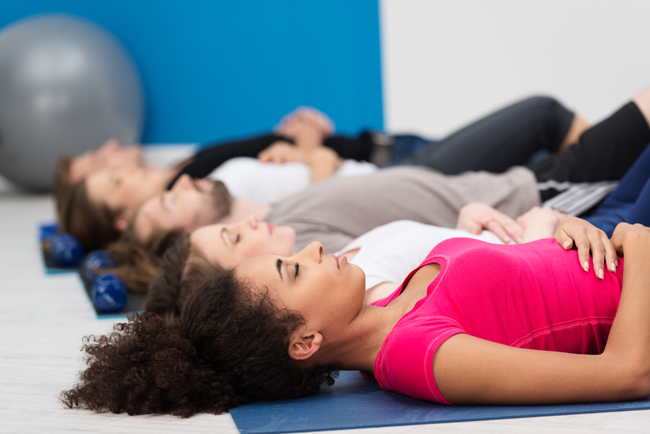There are several reasons why breathing is important. First, it’s the key to every human being’s survival to sustain life. Our breathing system supplies oxygen to vital organs of the body so they can function properly and keep us alive. Second, breathing is one means by which we get rid of waste products and toxins from the body.

Why Oxygenation of The Body Is So Vital?
Oxygen is the most vital nutrient for our bodies. It is essential to maintain the integrity of the brain, nerves, glands and internal organs. We can do without food for weeks and without water for days, but without oxygen, we will die within a few minutes. If the brain does not get proper supply of this essential nutrient, it will result in the degradation of all vital organs in the body.
The brain is the most important organ in the body and it requires more oxygen than any other organ. If it doesn’t get enough, the result is mental sluggishness, negative thoughts, depression and, eventually, vision and hearing decline. Our seniors, and those whose arteries are clogged, often become senile and vague because oxygen to the brain is reduced. They get irritated more easily.
Poor oxygen intake affects all parts of the body. The oxygen supply is reduced to all parts of the body as we get older due to poor lifestyle. Many people need reading glasses and suffer hearing decline in old age. These are some examples of poor oxygenation in the body:
- When an acute circulation blockage deprives the heart of oxygen, a heart attack is the result. If this occurs to the brain, the result is a stroke.
- For a long time lack of oxygen has been considered a major cause of cancer. Even as far back as 1947, work done in Germany showed that when oxygen was withdrawn, normal body cells could turn into cancer cells.
Thus, oxygen is very critical to our well-being, and any effort to increase the supply of oxygen to our body and especially to the brain will pay rich dividends. Breathing correctly is very important for adequate oxygenation throughout the body. In Cool Breathing, I share the 8 effective breathing techniques that I have developed and perfected. These breathing exercises are particularly important for people who have sedentary jobs and spend most of the day in offices. Their brains are oxygen starved and their bodies are just ‘getting by’. They feel tired, nervous and irritable and are not very productive. On top of that, they sleep badly at night so they get a bad start to the next day, continuing the cycle. This situation also lowers their immune system, making them susceptible to catching colds, flu and other ‘bugs’.
Oxygenation of the Body Purifies the Blood Stream
One of the major secrets of vitality and rejuvenation is a purified blood stream. The quickest and most effective way to purify the blood stream is by taking in extra supplies of oxygen from the air we breathe. The breathing exercises described below are the most effective methods ever devised for saturating the blood with extra oxygen.
Oxygen takes up the waste products (toxins) in the body, as well as recharging the body’s batteries (the solar plexus). In fact, most of our energy requirements come not from food but from the air we breathe.
By purifying the blood stream, every part of the body benefits, as well as the mind. Your complexion will become clearer and brighter and wrinkles will begin to fade away. In short, rejuvenation will start to occur.
The Benefits of Proper Breathing
- Lower Your Stress Levels
- Maintain a stable blood pressure to effectively reduce the damaging effects of stress
- Keeps you relaxed and free from anxiety

How To Start Benefiting from Effective Breathwork
Start with ‘deep-breathing’. Here’s a simple-yet-effective step-by-step guide to practice deep breathing.
- Find a quiet, comfortable place to sit or lie down.
- Close your eyes, sit comfortably with you back straight and take a normal breath.
- Now take a deep breath lasting 5-6 seconds. Breathe in slowly through your nose, let your chest and lower belly expand as you fill your lungs with the air. Let your abdomen expand fully.
- Hold on to it for just a few seconds.
- Now breathe out SLOWLY through your mouth, again lasting within 5-6 seconds.
- Continue the process. And now try to observe the rhythm of your body as you go about breathing. Put one hand on your abdomen, just below your belly button. Feel your hand rise about an inch each time you inhale and fall an inch each time you inhale and fall an inch each time you exhale. Remember to relax your belly so that each inhalation expands it fully.
- Repeat the process. Only, now you should blend deep breathing with something that will help you relax and focus. It can be an image (the beach or hiking), or a scene from your favorite movie or perhaps even a quote or phrase.
Deep breathing, at first, can be quite challenging and you may not feel that it is very relaxing. But with some practice (just like riding a bicycle) you will get used to it and it will get easier from then on.
Dr. Audrey Pullman is a Performance Enhancement Specialist with a background in Emergency Psychiatric Medicine, Disaster Integrated Emergency Management and Community Addiction. Dr. Pullman is a Certified Grief Recovery Specialist and integrates her knowledge of grief work, stress management and holistic work with complementary and traditional medicine. She has received several academic awards for the use of alternative medicine strategies in the management of chronic pain and stress-related problems. She has treated military veterans who suffered with Post-traumatic stress disorder and childhood and adolescence depression with art therapy and other integrative medicine modalities.
